Stocks and the Dollar are in uptrends, while Treasuries and gold remain in downtrends. Stocks pulled back on Wednesday and opened weak on both Thursday and Friday. However, buyers stepped in after these weak openings and stocks closed off their lows on both days. The bulls still have the edge here. Also note that Treasuries remain weak, which is bullish for stocks. TLT did not bounce even when stocks pulled back on Wednesday. Oil seems to be caught in the middle. Strength in stocks is positive, but strength in the Dollar is negative. At the very least, continued strength in stocks should put a floor on oil prices.
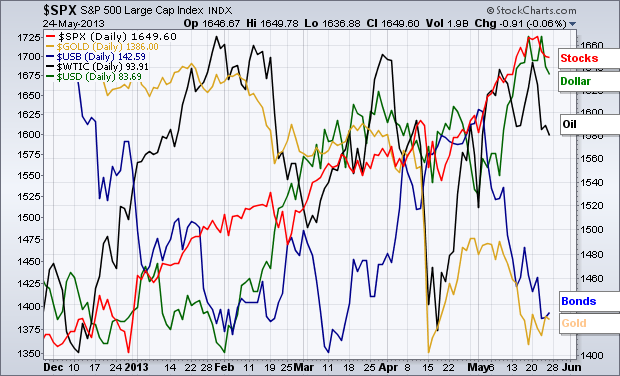

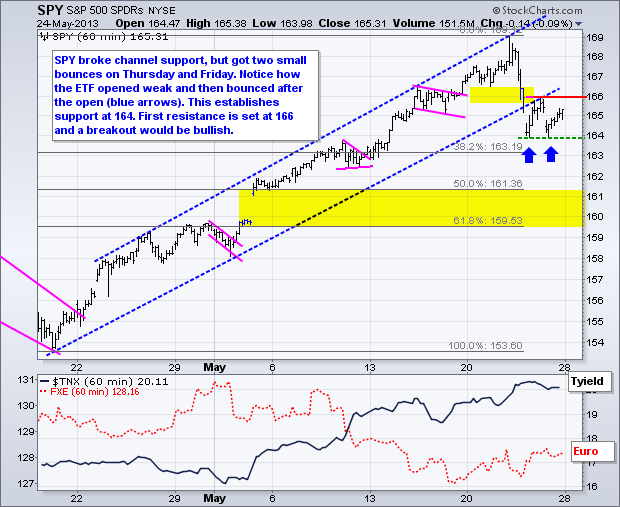
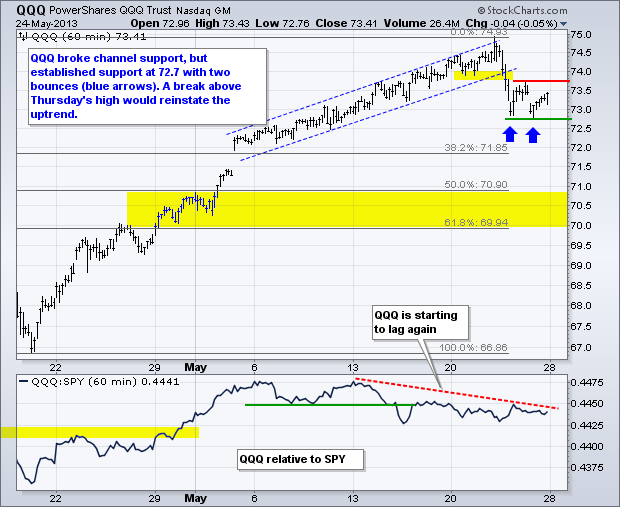
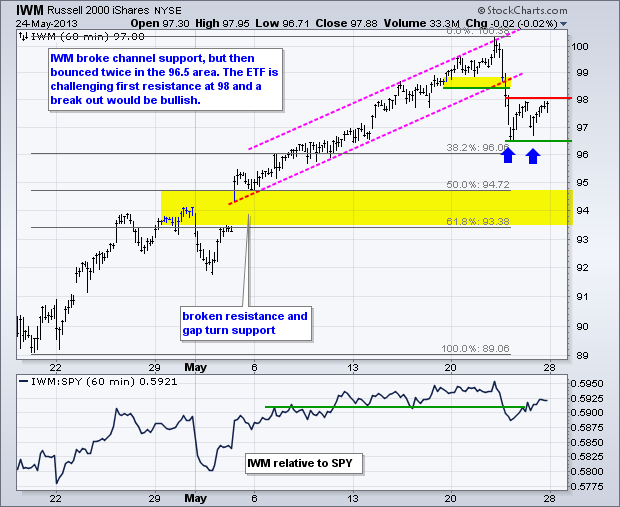
**************************************************************************

**************************************************************************
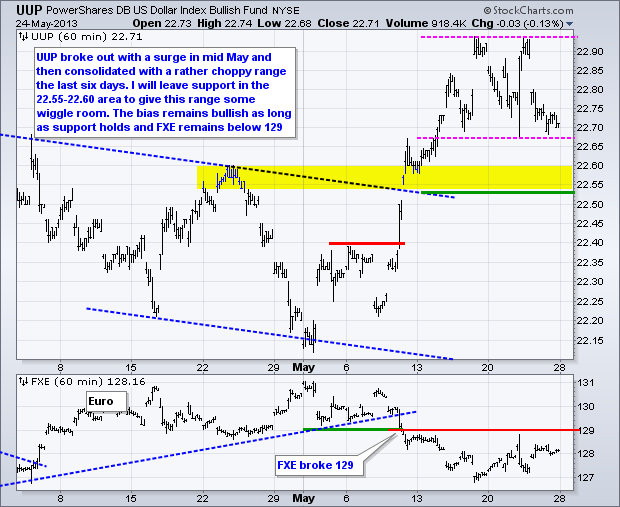
**************************************************************************
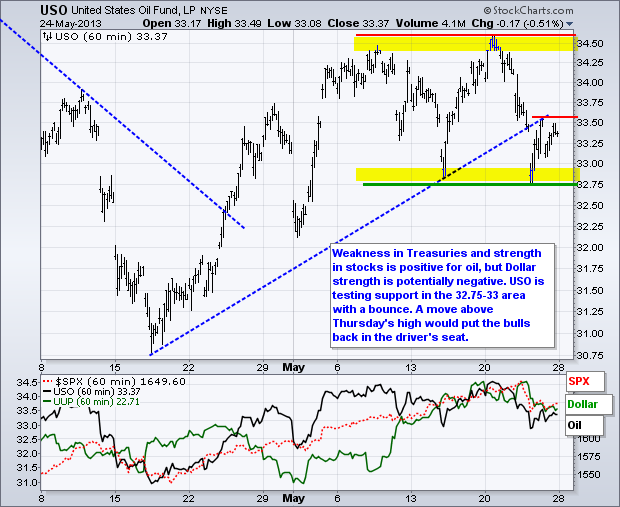
**************************************************************************
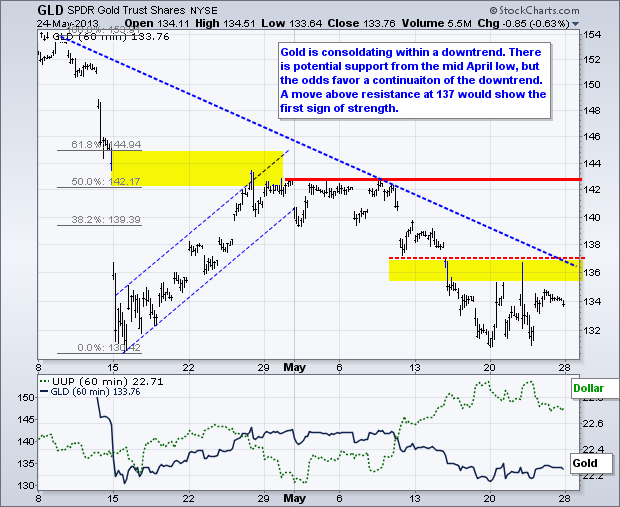
**************************************************************************
Key Reports and Events (all times Eastern):
Tue - May 28 - 09:00 - Case-Shiller Housing Index
Tue - May 28 - 10:00 - Consumer Confidence
Wed - May 29 - 07:00 - MBA Mortgage Index
Thu - May 30 - 08:30 - Jobless Claims
Thu - May 30 - 08:30 - GDP
Thu - May 30 - 10:00 - Pending Home Sales
Thu - May 30 - 10:30 - Natural Gas Inventories
Thu - May 30 - 11:00 - Oil Inventories
Fri - May 31 - 08:30 - Personal Income & Spending
Fri - May 31 - 09:45 - Chicago PMI
Fri - May 31 - 09:55 - Michigan Sentiment
Charts of Interest: Tuesday and Thursday
This commentary and charts-of-interest are designed to stimulate thinking. This analysis is
not a recommendation to buy, sell, hold or sell short any security (stock ETF or otherwise).
We all need to think for ourselves when it comes to trading our own accounts. First, it is
the only way to really learn. Second, we are the only ones responsible for our decisions.
Think of these charts as food for further analysis. Before making a trade, it is important
to have a plan. Plan the trade and trade the plan. Among other things, this includes setting
a trigger level, a target area and a stop-loss level. It is also important to plan for three
possible price movements: advance, decline or sideways. Have a plan for all three scenarios
BEFORE making the trade. Consider possible holding times. And finally, look at overall market
conditions and sector/industry performance.

About the author:
Arthur Hill, CMT, is the Chief Technical Strategist at TrendInvestorPro.com. Focusing predominantly on US equities and ETFs, his systematic approach of identifying trend, finding signals within the trend, and setting key price levels has made him an esteemed market technician. Arthur has written articles for numerous financial publications including Barrons and Stocks & Commodities Magazine. In addition to his Chartered Market Technician (CMT) designation, he holds an MBA from the Cass Business School at City University in London.
Learn More